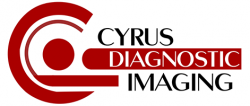MRI
You will be asked to remove all jewelry, eyeglasses, hearing aide, dentures, credit/bank cards, and any metallic objects. These may affect the quality of the images produced or cause harm or discomfort to you when placed within the magnetic field.
There will be no sensation, discomfort or pain associated with the exam. You will, however, hear knocking/thumping noises from time to time. This is normal, and you may wear earplugs to muffle these noises.
It is important to lie as still as possible. Movement may cause unsatisfactory images and necessitate a repeat of the exam. You may find it easier to relax if you do not consume coffee or other caffeinated beverages prior to your exam. You can bring a prescription sedative if you feel it will help you relax. If you plan to be sedated, please arrange for someone to drive you home.
Also, in some cases, your physician may order an injection of a contrast agent to enhance the diagnostic capabilities of the exam. If so, this will be administered and supervised by our on-site qualified technicians.
The radiologist will review and interpret your MRI examination upon completion. Within 24 hours, your physician will have a written report.
CT
Computed Tomography, widely known as a CAT scan, is medically referred to as simply CT. In its early days of development and use, it was called Computerized Axial Tomography, hence the term CAT.
CT is generally a relatively quick procedure that uses x-ray beams to create computer-generated image of soft tissue structures, such as tumors and internal organs, and air cavities (sinuses, lungs). It also has advantages in skeletal and neurological imaging. Its radiation doses to the human body are considered minimal due to the speed in which the X-Ray is delivered.
The procedure requires you to lie in a horizontal position, either on your back or stomach, and remain comfortably still. A flat, moving table goes through the center of a donut-shaped x-ray machine. X-ray beams from a number of positions are aimed at the area being studied. A special detector measures the amount of absorbed radiation. This data is transformed by a computer into a digital image.
Virtual Colonoscopy
Helical computed tomography (CT) is used to generate high-resolution, two-dimensional axial images of the abdomen and pelvis. Three-dimensional images of the colon simulating those obtained with conventional colonoscopy can be reconstructed from the data obtained. Basic imaging principles: cleansing the patient’s colon using a standard barium enema or colonoscopy bowel preparation, colonic insufflation with room-air and thin-section, low dose CT of the abdomen and pelvis followed by off-line computer manipulation of the CT dataset to facilitate inspection of the colonic wall.
Bowel Preparation
Virtual colonoscopy requires a well prepared, cleansed colon to achieve appropriate sensitivity and specificity. Retained stool can simulate polyps decreasing specificity while retained fluid can obscure polyps resulting in decreased sensitivity.
